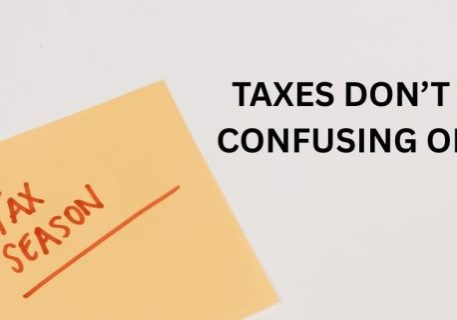
Don’t let the title mislead you. I don’t believe we will see twice the pain as we did from 2000-2002, but I do believe there are a lot of similarities between the two time periods.

Y2K Bug
- We had a bug and a brewing crisis where all hands were on deck to solve the problem.
- This led to massive investment in the technology sector from 1990-2000 to prepare for the global shutdown of all computer systems due to their internal clocks designed to only work up until the millennium. It was a real threat, but the reaction was overblown.
- The Federal Reserve (Fed) and Alan Greenspan, the chair at the time, increased peoples cash position to prepare for mass hysteria. People always feel a little better with some excess cash in their pockets even during a crisis.
- Year 2000 came, and nothing happened. Computers kept on ticking and people survived unscathed. Planes didn’t fall out of the sky and buildings didn’t spontaneously combust.
- However, the technology sector did not survive. Greenspan saw that it was all “much ado about nothing” and recognized the need to immediately pull the excess out of the markets.
- As usual he over-reacted both leading up to the event and during the cleanup phase.
- At the same time, we had a terrorist attack on the same level of Pearl Harbor.
- We immediately went to war with a country that had little to do with the terrorist attack, but hey who’s counting. We also like our strategic oil partnerships, don’t we? Eventually we did go to war with the right country.
How is that any different than our most recent event? The details are a bit different, but when you sift through the noise, we are in a very similar environment only this one has been a bit more reactionary versus proactive than the last one which probably means the over-reaction could be a tad bit worse as well.
COVID-19 Bug

- Here we had an unknown virus or bug attacking and killing humans. The virus had the ability to be transferred as easily as the common cold.
- This time we did see a crisis unveil itself and we saw a government take draconian action to protect its people (Can’t really blame them much for that).
- But where it gets back to being a similar event in economic terms is we had massive amounts of excess put into the economy to keep it going through an untold story of a crisis.
- As the crisis unfolded, the federal government and the federal reserve both continued injecting stimulus into the economy.
- All the while both entities could see the excess playing out in the form of inflation in all goods and services but they were in total denial.
- Now we have extreme inflation and a lot of it went to the technology sector once again. This was because technology has been our best tool for staying social through the social distancing era we’ve been in.
- But technology is cyclical and all the demand that was brought forward to the past couple of years has now evaporated and those devices we just bought will last us another 5 years or so (We are beginning to see excess supply in technology due to this).
- We also have excess supply in labor markets. Who needs to work when you have plenty of cash.
- Furthermore, we have excess demand in housing and autos.
- Essentially, we have a lot of markets that are out of balance due to shutdowns and massive stimulus action at the same time.
- People moved all over the place trying to figure out how to get away from each other or how to live their life to the fullest for the short time they had left to live.
- There has been so much excess that everyone thought they needed a new car along with their new house.
- All of this has been going on while a lot of the same people weren’t working.
- With a lot fewer people working, we ran into another snag. Oh yeah, it takes people working to make the things we all want to buy. And there came the supply shortages.
- Moving on to exacerbate the situation, Putin saw a great opportunity to attack a friendly nation and essentially put us all in a proxy war with Russia.
So now it’s time to take the pain pill and deal with it. The current Fed has admitted to their denial of long-term inflation at this point. Since March, which was also when they quit stimulating the economy, the Fed has raised rates effectively 12 times (1 rate increase equals .25%). It’s the fastest rate increase I believe we have ever seen. The stock market, housing market and bond market are all coming down and repricing at more reasonable levels. However, the labor market is not. We still can’t get those lazy bums to get off their couch in their new homes and go make something that we can all buy. The Fed will not stop with their actions until the labor market plays out how they want it to. In the meantime, the federal government continues to do it’s best to save the people and provide them with new cash or debt relief.
So how do you invest in times like this? I could see it being very much like the Dot Com crash. A lot of those companies are DNE (Do Not Exist). Worldcom, Arthur Anderson, Enron, Global Crossing just to name a few. And then you had a lot of companies that took a long time to get back to their pre-bursted position: Microsoft, Amazon, Intel, Cisco (the last two are still struggling😊). So my point here is that it would be prudent to be very selective with positions in technology going forward (at least for the next 5 years). There may be better places to have your money invested.
On a portfolio level I would also be cautious of selling into this weakness. Hopefully there is cash or similar investments already sitting on the sidelines in your portfolio that you can use once the washout has occurred which may be sooner than you think. The last couple of shoes to drop will be earnings revisions over the next couple of quarters AND there may be massive layoffs, but I’m still chewing on that one. It might just be more of a hiring freeze and promotion freeze for this next recession. I’m just worried about the lazy bums that never went back to work. Those people are going to have a real hard time getting a job. But if history is any guide, our faithful government will do their best to maintain their position as the ultimate savior.
Lastly, we have a lot of baby boomers setting up for retirement. This in my opinion could be a great time to start preparing yourself. Since the bond market has come down so dramatically and dividend yields are much higher than we’ve seen in a long time, I think it might be a good time to start looking at some intermediate and longer term bonds to add to such portfolios. As always, there is opportunity in every good crisis that comes our way so be on the lookout to take advantage.
Other Articles You Might Like...



